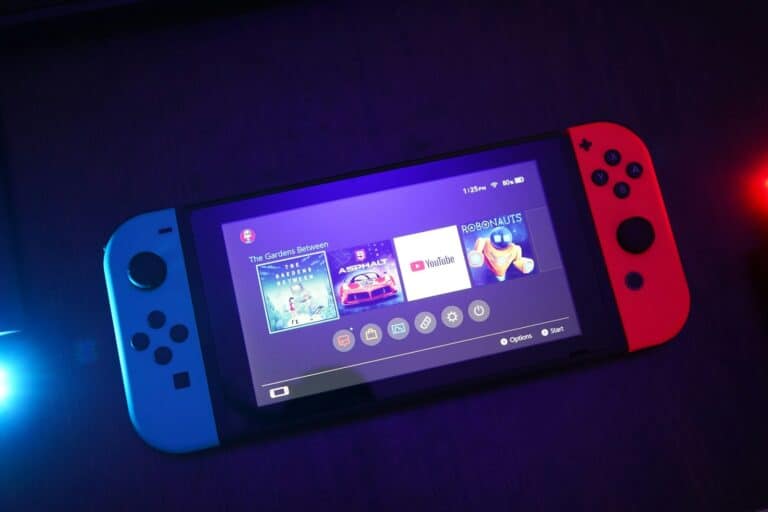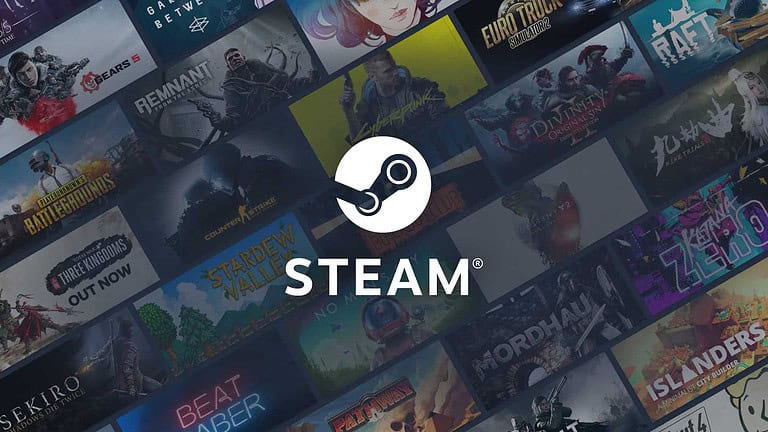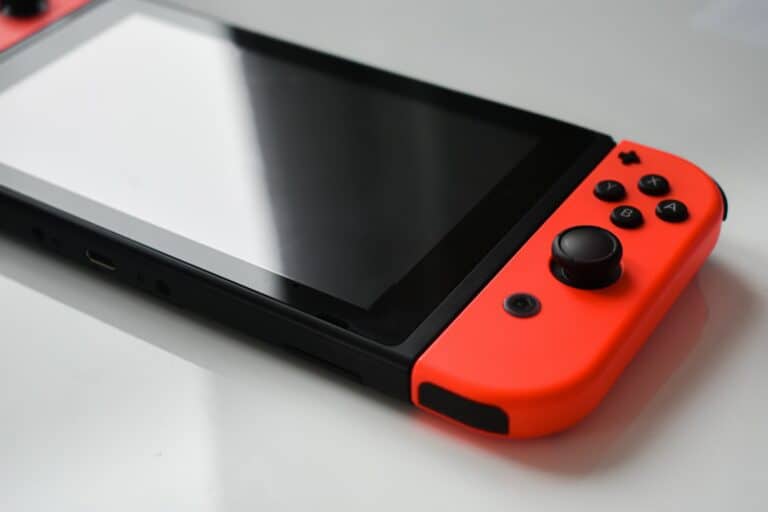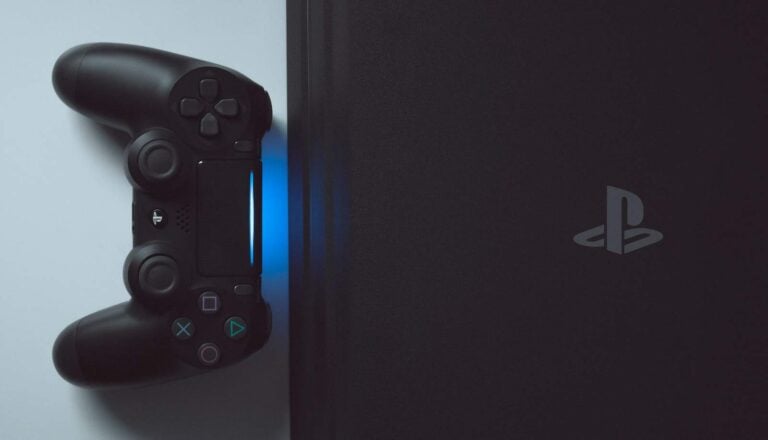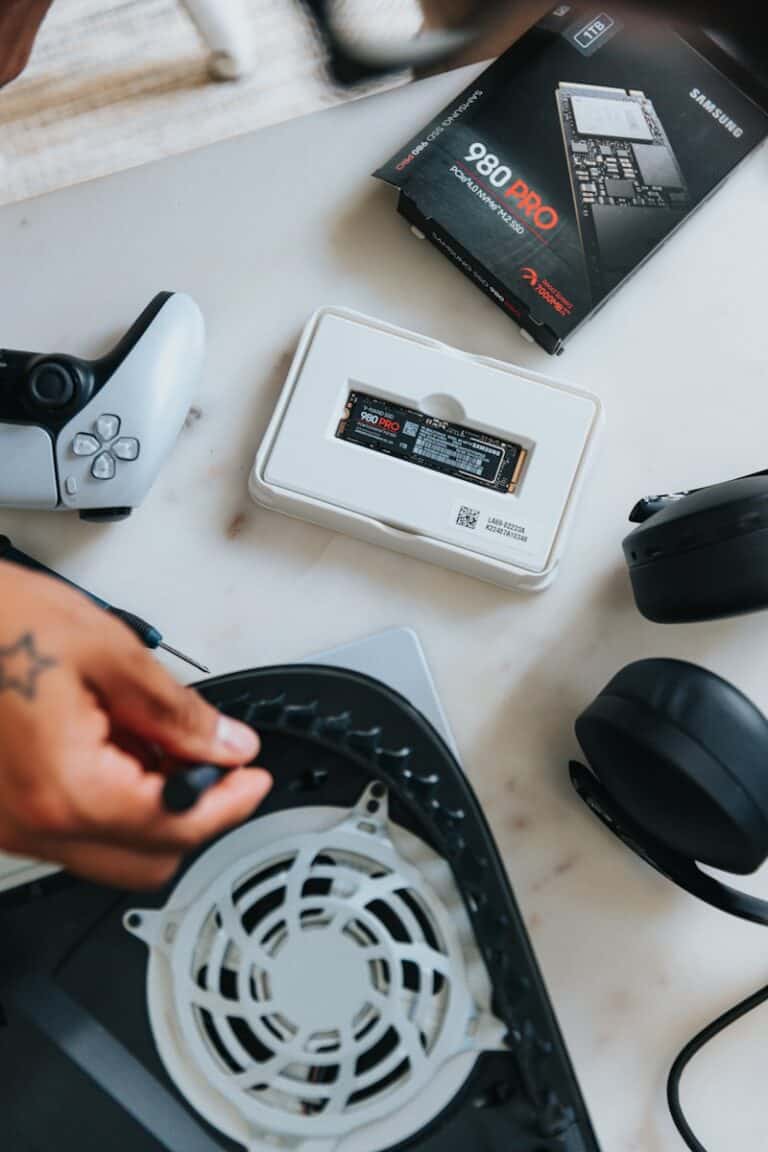
PlayStation has become a gaming icon since its debut in the mid-1990s. Sony’s family of consoles has evolved dramatically over the years, introducing new technologies and experiences with each generation. The PlayStation line includes five main home consoles released between 1995 and 2020, each representing significant leaps in gaming capability and design.
Understanding the PlayStation timeline helps you appreciate how quickly gaming technology has advanced. From the original PlayStation’s blocky 3D graphics to the PlayStation 5‘s ray-tracing capabilities, each console has pushed boundaries in different ways. This progression shows how Sony has consistently shaped the gaming industry through innovation and strategic timing.
1) PlayStation (1994)
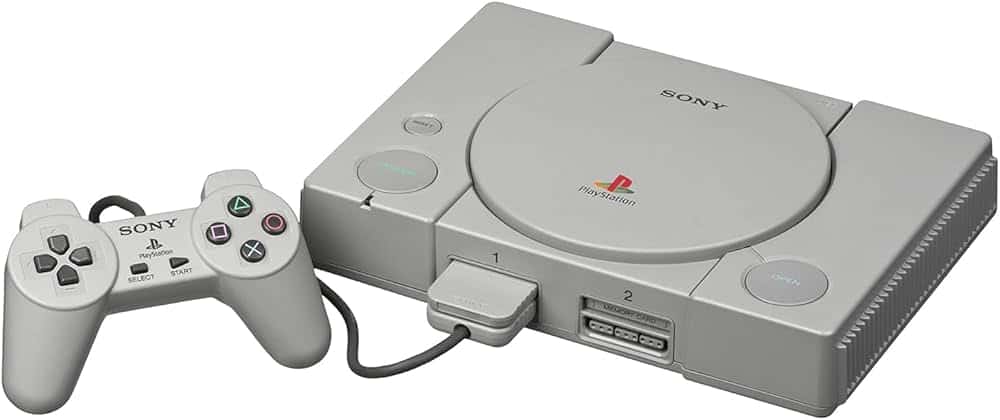
The original PlayStation marked Sony’s bold entry into the video game market. It first launched in Japan on December 3, 1994, followed by releases in North America on September 9, 1995 and Europe shortly after.
You might not know that PlayStation began as a failed partnership with Nintendo. After Nintendo backed out of their CD-ROM add-on agreement, Sony decided to develop their own console instead.
The PlayStation featured cutting-edge 3D graphics for its time. With its 32-bit processor and CD-ROM drive, it offered a significant leap over cartridge-based systems like the Nintendo 64.
You could play iconic games that defined a generation. Titles like Final Fantasy VII, Metal Gear Solid, and Crash Bandicoot became household names and established franchises that continue today.
The original controller didn’t include analog sticks at first. Sony later released the Dual Analog Controller in 1997, followed by the DualShock with vibration feedback, setting the template for PlayStation controllers going forward.
PlayStation’s CD format allowed for larger games with full-motion video and high-quality audio. This helped attract more developers and publishers to the platform.
You might remember the distinctive startup sound and loading screen. These elements became instantly recognizable to gamers worldwide.
By the end of its run, the PlayStation had sold over 100 million units globally. This remarkable success established Sony as a major player in the gaming industry.
The console received a redesign in 2000 with the PS One, a smaller and lighter version of the original hardware. It remained popular even after the PlayStation 2 launched.
The PlayStation’s library grew to include over 7,900 games worldwide. This extensive collection ensured there was something for everyone, regardless of your gaming preferences.
2) PlayStation One (2000)
The PlayStation One, often called PS One, was Sony’s redesigned and smaller version of the original PlayStation console. It was released in 2000 as a compact alternative to the bulkier first PlayStation.
This sleeker model featured a more rounded design with a white exterior that made it stand out from its gray predecessor. The smaller footprint made it easier to fit in entertainment centers or take on trips.
Despite being physically smaller, the PS One retained full compatibility with the original PlayStation game library. You could play all your favorite PS1 titles without any issues on this compact version.
One notable addition was the option to attach a small LCD screen, turning your PlayStation One into a portable gaming system. This LCD screen accessory made it possible to play games even without a TV.
Sony launched the PS One model in various markets at different times. In India, for example, the console was released countrywide on January 24, 2002, priced at Rs 7,990.
The PS One arrived near the end of the original PlayStation’s lifecycle, as the PlayStation 2 was already on the market. However, this didn’t stop it from becoming popular with gamers who wanted a more affordable entry into the PlayStation ecosystem.
You could choose from the same great library of games that made the original PlayStation famous. From Crash Bandicoot to Final Fantasy VII, all the classics worked perfectly on this miniaturized console.
The PlayStation One helped extend the lifecycle of the original PlayStation hardware while Sony continued to focus on their newer PS2 console. This strategy allowed them to reach new customers with a more affordable option.
3) PlayStation 2 (2000)
The PlayStation 2 (PS2) stands as one of the most successful gaming consoles ever created. It was first released in Japan on March 4, 2000, followed by North American and European launches in October and November of the same year.
What made the PS2 special was its impressive backwards compatibility. You could play all your original PlayStation games on it, which meant you didn’t have to abandon your existing game collection when upgrading.
The console featured a sleek black design that could be positioned either horizontally or vertically using a stand. Early models were quite bulky, but Sony later released slimmer versions that took up less space in your entertainment center.
One major selling point was the built-in DVD player. At a time when standalone DVD players were expensive, the PS2 offered an affordable way for you to watch movies and play games on one device.
The PS2’s technical specifications were impressive for its time. It featured a custom “Emotion Engine” CPU and “Graphics Synthesizer” GPU that allowed developers to create games with more detailed environments and characters than ever before.
The console’s controller, the DualShock 2, refined the design of its predecessor. You could enjoy improved analog sticks and pressure-sensitive buttons that enhanced gameplay across various genres.
Gaming libraries don’t get much better than what the PS2 offered. You had access to iconic titles like Jak and Daxter, Twisted Metal: Black, Ico, Ratchet & Clank, and Sly Cooper. The God of War and Killzone franchises also found their beginnings on this platform.
The PS2 enjoyed an incredibly long market life. Sony continued manufacturing the console until 2013, giving it a remarkable 13-year production run. This longevity helped it achieve record-breaking sales figures.
With over 155 million units sold worldwide, the PlayStation 2 remains the best-selling home console of all time. Its massive success established Sony as a dominant force in the gaming industry for years to come.
4) PlayStation 2 Slim (2004)
In 2004, Sony revised the PlayStation 2 with a smaller, lighter design officially known as the Slimline model, though most people simply called it the “PS2 Slim.” This redesign came four years after the original PS2 launch and offered a more compact gaming experience.
The PS2 Slim was significantly smaller than its predecessor. You could easily fit it into a backpack or small shelf space, making it more convenient for gamers with limited room. The reduced size didn’t affect its performance capabilities.
This redesigned console maintained full compatibility with the extensive PS2 game library and still played original PlayStation games. You could enjoy all your favorite titles without worrying about compatibility issues.
Sony made several internal construction changes with the Slim model. These modifications improved reliability while reducing manufacturing costs. You might have noticed the quieter operation compared to the bulkier original model.
The PS2 Slim featured an integrated Ethernet port for online gaming, something that required an adapter on early original models. You could more easily connect to online services without purchasing additional accessories.
Another notable change was the power supply. The original PS2 had an internal power supply, while the Slim version used an external power brick. This design choice helped reduce the console’s overall size and heat output.
The PS2 Slim continued production for many years, becoming one of Sony’s longest-manufactured consoles. You could still purchase new PS2 Slim systems until around 2013, a remarkable 13-year run for the PlayStation 2 family.
Despite being smaller, you didn’t lose any gaming functionality. The PS2 Slim still supported all accessories including memory cards, controllers, and add-ons that worked with the original model.
The redesigned console helped extend the PlayStation 2’s remarkable market life. You could enjoy the same massive game library that made the PS2 the best-selling home console in history, just in a more convenient package.
5) PlayStation 3 (2006)
The PlayStation 3 marked Sony’s entry into the high-definition gaming era when it launched on November 11, 2006 in Japan, followed by a November 17 release in North America. This powerful console represented a significant technological leap from its predecessor.
When you first saw the PS3, you might have noticed its curved design, initially available in a glossy black finish. Sony offered two main configurations at launch – a 20GB model and a premium 60GB version with additional features.
The PS3 introduced the Cell processor, developed jointly by Sony, Toshiba, and IBM. This powerful chip, paired with an NVIDIA graphics processor, delivered impressive visuals that showcased the console’s capabilities.
One of the PS3’s most significant innovations was its Blu-ray disc drive. This not only allowed for games with larger capacity but positioned your console as a complete home entertainment system. Many households used their PS3 as their primary Blu-ray player.
The console also marked Sony’s serious entry into online gaming with the PlayStation Network. You could connect with friends, download games, and access media content through this service.
Controller design evolved with the PS3’s wireless SIXAXIS controller, which initially lacked rumble features but included motion-sensing capabilities. Later, Sony introduced the DualShock 3 controller that combined both features.
The PS3 went through several model revisions during its lifecycle. You might remember the “Slim” version released in 2009, which featured a smaller footprint and more energy-efficient design. Later, the “Super Slim” model further reduced the console’s size.
Exclusive games helped define the PS3 experience. Titles like Uncharted, God of War III, and The Last of Us showcased what the hardware could achieve when developers mastered its architecture.
Despite a relatively high launch price that initially slowed adoption, the PS3 eventually sold over 87 million units worldwide. The console remained in production for over a decade, with Sony supporting it until 2017.
6) PlayStation 3 Slim (2009)
The PlayStation 3 Slim was Sony’s first major redesign of the PS3 console. Released in September 2009, this model brought significant changes to the original “fat” PS3 that launched in 2006.
You would immediately notice the Slim was considerably smaller than its predecessor. Sony managed to reduce the weight and thickness substantially while maintaining the console’s performance capabilities.
The PS3 Slim featured a matte finish instead of the glossy exterior of the original model. This design choice helped reduce visible fingerprints and scratches that were common complaints with the first version.
One significant change was the removal of PS2 backwards compatibility. If you owned the original PS3, you might have been able to play PS2 games, but Sony eliminated this feature in the Slim to reduce manufacturing costs.
The Slim model consumed about 34% less power than the original PS3. This made it more energy-efficient and helped reduce the heat output that had plagued some early PS3 units.
Storage options for the PS3 Slim started at 120GB and later expanded to include 160GB and 320GB models. This gave you more space for game installations and media content.
The PS3 Slim also featured a new branding style, with the PlayStation logo appearing in a more subtle design on the console. You could identify Slim models by their CECH designation in the serial number.
Sony introduced a new software update alongside the Slim that brought improvements to the XMB (Cross Media Bar) interface. This made navigating your console’s features more intuitive.
The price was perhaps the most welcome change. The PS3 Slim launched at $299, significantly less than the original PS3’s $599 price tag. This made the PlayStation 3 more accessible to a wider gaming audience.
By 2010, the Slim had helped Sony regain momentum in the console market, competing more effectively against Microsoft’s Xbox 360. You could find the PS3 Slim in most major retailers until it was eventually replaced by the Super Slim model in 2012.
7) PlayStation 3 Super Slim (2012)
The PlayStation 3 Super Slim arrived as the third redesign of Sony’s seventh-generation console in late 2012. This model represented Sony’s effort to streamline manufacturing costs while maintaining the PS3’s core functionality.
This version featured a unique top-loading disc drive with a sliding cover instead of the slot-loading mechanism found in previous models. The change gave the Super Slim a distinctive appearance compared to its predecessors.
The Super Slim was approximately 25% smaller and 20% lighter than the Slim model. This made it the most compact PS3 version, perfect if you were looking to save space in your entertainment center.
Sony offered the Super Slim in several storage configurations, typically 250GB and 500GB models. Some regions received special editions with different colors or bundled games to entice buyers late in the console’s lifecycle.
You could still enjoy all the features that made the PS3 platform popular, including Blu-ray playback, PlayStation Network access, and the entire PS3 game library. The Super Slim maintained compatibility with PSone games while dropping PS2 compatibility.
The console featured the same connectivity options as the Slim model, including HDMI output, optical audio, and USB ports. However, Sony removed the ability to install alternative operating systems like Linux, which had been available on the earliest PS3 models.
By this point in the PS3’s lifespan, you had access to a massive library of games spanning nearly six years of releases. The Super Slim launched about a year before the PlayStation 4 would arrive, representing the PS3’s final form.
Despite releasing near the end of the generation, the Super Slim redesign helped extend the PS3’s market presence as developers continued supporting the platform alongside next-generation consoles.
8) PlayStation 4 (2013)
The PlayStation 4 launched on November 15, 2013 in North America, marking Sony’s entry into the eighth generation of video game consoles. You might remember the excitement surrounding this release, as it came seven years after the PS3.
When you first saw the PS4, you probably noticed its sleek, angular design that was quite different from its predecessor. The console featured significantly improved hardware, including an AMD Jaguar CPU and 8GB of GDDR5 RAM, which gave you much better gaming performance.
One of the biggest changes you experienced with the PS4 was its new DualShock 4 controller. This redesigned controller added a touchpad, light bar, and share button that made your gaming experience more interactive and social.
The PS4 quickly became one of the most popular PlayStation consoles in Sony’s history. Within just a few years, you could choose from multiple versions of the hardware.
In 2016, you got access to the PS4 Slim, a smaller and more energy-efficient version of the original console. That same year, Sony released the PS4 Pro, which offered you 4K gaming capabilities and enhanced performance for compatible games.
Online features became much more important in your gaming experience with the PS4. The PlayStation Network expanded significantly, offering you more robust multiplayer options and digital content.
The PS4 era brought you countless exclusive titles that defined the generation. Games like God of War, Horizon Zero Dawn, Spider-Man, and The Last of Us Part II showcased what your console could do.
By the time the PS5 launched in 2020, the PlayStation 4 had sold over 115 million units worldwide. Your PS4 remains relevant even today, with many cross-generation games still releasing for both PS4 and PS5.
The PlayStation 4 represented a significant leap forward in your gaming experience and helped establish Sony’s dominance in the console market during that generation.
9) PlayStation 4 Slim (2016)
The PlayStation 4 Slim launched on September 15, 2016, as a refreshed version of the original PS4 console. Sony actually marketed this model simply as “PlayStation 4” rather than using the “Slim” name, though most gamers and retailers added the “Slim” descriptor to distinguish it from the original model.
You might notice the PS4 Slim features a more streamlined design compared to its predecessor. The matte finish replaced the half-glossy surface of the original, giving it a more subdued appearance that many players preferred.
Size reduction was a key improvement with this model. The PS4 Slim is notably smaller and lighter than the original PS4, making it easier to fit into your entertainment center or carry to a friend’s house for gaming sessions.
Power consumption also saw improvements with the Slim version. The redesigned internals require less electricity to run, which could help reduce your electric bill if you play frequently.
The PS4 Slim maintained the same core hardware capabilities as the original model. You get identical processing power, graphics capabilities, and game compatibility, ensuring you wouldn’t miss out on any performance benefits by choosing the Slim.
Storage options expanded over time for the PS4 Slim. While initially available with a 500GB hard drive, Sony later offered 1TB models to accommodate your growing game library.
The controller received minor updates with the Slim release. The DualShock 4 included with the PS4 Slim added a visible light bar on the touchpad, allowing you to see the controller’s color status without flipping it over.
Connectivity options changed slightly with the PS4 Slim. Sony removed the optical audio port that existed on the original model, which might affect your setup if you used that connection for audio equipment.
The PS4 Slim launched around the same time as the PlayStation 4 Pro, positioning it as the standard model while the Pro served as the premium option for those wanting enhanced performance.
10) PlayStation 4 Pro (2016)
The PlayStation 4 Pro launched on November 10, 2016, as Sony’s first mid-generation console upgrade. This enhanced version of the PS4 was designed to support the growing popularity of 4K televisions and deliver more powerful gaming experiences.
Unlike a completely new console generation, the PS4 Pro maintained full compatibility with the original PS4 game library. You didn’t need to buy new games if you upgraded your console.
The most significant improvement was the enhanced graphics capability. The PS4 Pro featured a GPU twice as powerful as the standard PS4, allowing for 4K resolution gaming and improved frame rates on many titles.
Sony implemented a feature called “PS4 Pro Enhanced,” which let you know which games were optimized to take advantage of the Pro’s additional power. These games often offered multiple display modes letting you prioritize resolution or performance.
The console maintained the same general design language as the original PS4 but with an additional “layer” on the console body. It was also slightly larger and heavier than the standard model.
Storage capacity increased with the PS4 Pro, which came with a 1TB hard drive at launch. This provided more space for your growing game library and downloads.
HDR (High Dynamic Range) support was another key feature, offering more vibrant colors and better contrast in supported games. This made bright scenes brighter and dark scenes darker, creating more visually impressive gaming experiences.
The PS4 Pro was publicly revealed on September 7, 2016, alongside an updated version of the original PS4. It positioned itself as a premium option for players wanting the best PlayStation experience without waiting for a new generation.
At $399, the PS4 Pro maintained the same launch price as the original PS4, making it an attractive upgrade option for enthusiasts who wanted more power without breaking the bank.
Evolution of PlayStation Consoles
Sony’s PlayStation consoles have transformed gaming since their debut in 1995. Each generation has introduced new capabilities while responding to changing consumer needs and technological possibilities.
Technological Advancements
The original PlayStation revolutionized gaming with its CD-ROM format, allowing for larger games with better graphics than cartridge-based systems. It featured 32-bit processing and introduced 3D gaming to the masses.
The PlayStation 2 built on this foundation with DVD playback, making it both a gaming console and home entertainment system. Its Emotion Engine processor was groundbreaking for its time, enabling more complex games and realistic environments.
PS3 introduced Blu-ray technology, HD gaming, and the PlayStation Network. The PS4 then refined these elements with a more developer-friendly architecture and expanded social features.
The PS5 represents the current peak with its custom SSD virtually eliminating load times, ray-tracing capabilities, and haptic feedback controllers that create truly immersive experiences.
Market Influence
PlayStation has consistently shaped the gaming industry through innovation and strategic positioning. The original PlayStation challenged Nintendo’s dominance by attracting third-party developers with easier development processes and lower licensing fees.
The PS2 became the best-selling console in history with over 155 million units sold, establishing Sony as the market leader. Its DVD capabilities helped drive adoption of the format in homes worldwide.
PlayStation’s exclusive game franchises like God of War, Uncharted, and The Last of Us have become cultural touchstones that influence the wider entertainment industry. These titles showcase what’s possible in interactive storytelling.
You’ve seen PlayStation evolve from gaming-focused devices to complete entertainment hubs. The PlayStation ecosystem now extends beyond consoles to include PlayStation Plus subscription services, Remote Play features, and VR technology.
Notable Features of Each Generation
The original PlayStation (1994) changed gaming forever with its CD-ROM drive, which allowed for much larger games than cartridges. You could enjoy 3D gaming with its impressive graphics capabilities.
PlayStation 2 became the best-selling console ever with over 155 million units sold. It introduced DVD playback, making it a complete entertainment system for your living room.
With PlayStation 3, you got your first taste of Blu-ray technology and HD gaming. The console also introduced the PlayStation Network, allowing you to connect with friends and download games directly.
The PlayStation 4 represented a massive leap forward with processing power more than five times faster than PS3. This allowed for much more detailed and immersive gaming worlds for you to explore.
PlayStation 5 brought revolutionary changes with its ultra-high-speed SSD. You now experience virtually no loading times and can enjoy games in stunning 4K resolution with ray tracing technology.
The handheld PSP and PS Vita extended PlayStation gaming beyond your living room. These portable devices let you take your gaming on the go with impressive graphics that rivaled home consoles of their time.
Each generation of PlayStation has significantly improved performance and user experience, pushing the boundaries of what’s possible in interactive entertainment.
Frequently Asked Questions
PlayStation consoles have evolved significantly since their introduction in the 1990s. Here are answers to common questions about the PlayStation lineup that will help you understand the chronology and key differences between models.
What are the release dates of PlayStation consoles in chronological order?
The original PlayStation was released in December 1994 in Japan and September 1995 in North America. The PlayStation 2 followed in March 2000 in Japan and October 2000 in North America.
The PlayStation 3 launched in November 2006, while the PlayStation 4 debuted in November 2013. The latest console, the PlayStation 5, was released in November 2020.
Each console represents a significant technological leap from its predecessor, with improved graphics, processing power, and features.
Which PlayStation console came after the PlayStation 2?
The PlayStation 3 (PS3) directly succeeded the PlayStation 2. It was released in November 2006 and introduced several groundbreaking features.
The PS3 was Sony’s first console to feature a Blu-ray disc drive, which provided significantly more storage capacity than the DVD format used by the PS2. It also introduced the PlayStation Network for online gaming and digital purchases.
The console went through several revisions during its lifecycle, including the PS3 Slim in 2009 and the PS3 Super Slim in 2012.
When was the PlayStation 1 first introduced to the market?
The original PlayStation console (often called PS1) was first introduced to the market in Japan on December 3, 1994. It then launched in North America on September 9, 1995.
This was Sony’s first entry into the video game market, competing against established players like Nintendo and Sega. The PlayStation quickly gained popularity due to its 3D graphics capabilities and extensive game library.
In 2000, Sony released a smaller redesign called the PlayStation One, which featured a more compact form factor but retained the same functionality.
How does the PlayStation 5 differ from its predecessors?
The PlayStation 5 features a custom AMD Zen 2 CPU and RDNA 2 GPU, providing a massive leap in processing power over the PS4. It also includes a custom SSD that dramatically reduces loading times.
The DualSense controller introduces haptic feedback and adaptive triggers, creating more immersive gaming experiences. These features allow you to feel different textures and resistance levels as you play.
The PS5 offers backward compatibility with most PS4 games, allowing you to play your existing library. It comes in two versions: a standard edition with a disc drive and a Digital Edition without one.
As of 2025, has the PlayStation 6 been officially released?
As of March 2025, Sony has not officially released the PlayStation 6. The PlayStation 5 remains Sony’s current flagship gaming console.
Sony typically maintains a console generation for 6-7 years before introducing a successor. Since the PS5 was released in November 2020, a PS6 would not be expected until around 2026-2027 based on historical patterns.
Sony has released mid-generation upgrades in the past, such as the PS4 Pro, but no such enhancement for the PS5 has been officially announced yet.
Between the PS4 and the PS5, which system offers better value for current generation gaming?
The PS5 offers significantly better performance with faster loading times, higher frame rates, and better graphics for new games. If you want to play the latest titles with the best possible experience, the PS5 is your best choice.
However, the PS4 has a massive library of games and can be found at a much lower price point. Many new games are still being released with PS4 versions, though they may have reduced features or graphics.
Your existing game collection should also factor into your decision. While the PS5 plays most PS4 games through backward compatibility, if you have a large PS4 library, you’ll get more immediate value from that system.

